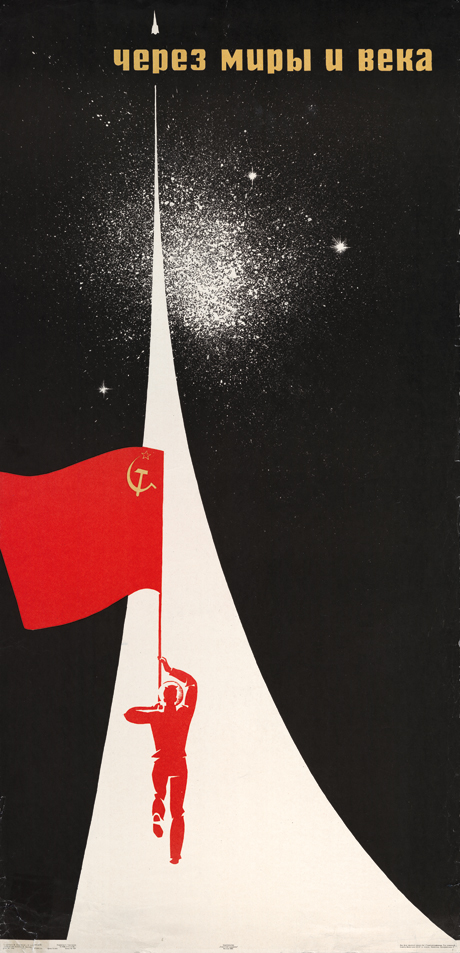Newcastle’s Hatton Gallery screened the 1925 Soviet Russian silent film Battleship Potemkin. A cinematic copy was loaned by the British Film Institute, to bolster the celebration of the gallery’s temporary Francis Bacon exhibition. (The influence of this film can be seen in Bacon’s paintings.)
Battleship Potemkin is an important work, dramatising real-world events, it is essentially a five act anti-military propaganda (and intended to be a pro-Bolshevik narrative of the 1905 Russian Revolution). It concerns the mutiny of the battleship’s resentful sailors against their neglectful officers.
It would be nice to break down why I enjoyed the film, and discuss the cinematography, but it is more in tune with my blog to share some of the posters advertising Battleship Potemkin. I’ve picked out two USSR posters, and some international poster advertisements, too.
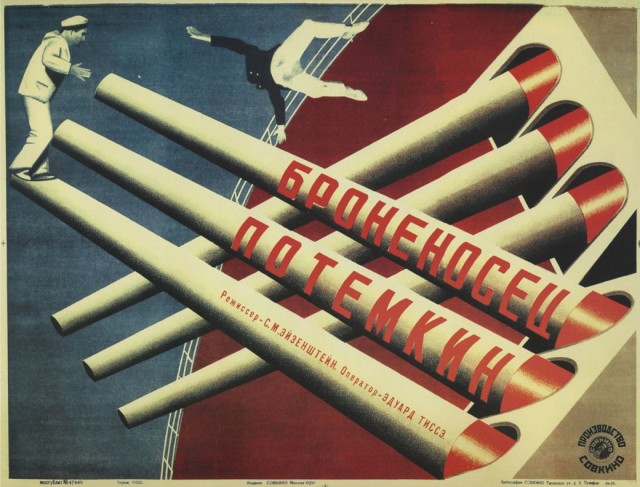
The poster above shows a scene from Act II: Drama on the Deck. The limited colours of black, white, red, and blue, make the printing of this poster economical, but they also work well together in this composition; the blue representing the sea, and the red the ship’s deck. I like the placement of the text on the ship’s gun turrets as it doesn’t break up the illustration.
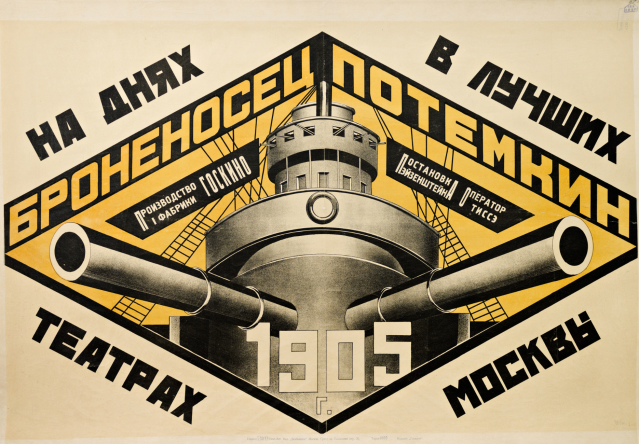
I like that the irregular hexagon and limited colour palette makes the image look not unlike a military emblem itself. A very striking, limited colour palette, with strong forced perspective.
On this blog, I’ve looked at illustration produced in the USSR before. Soviet Russian illustration and composition is still very fresh-looking to my eyes.
Let’s look at some international posters.
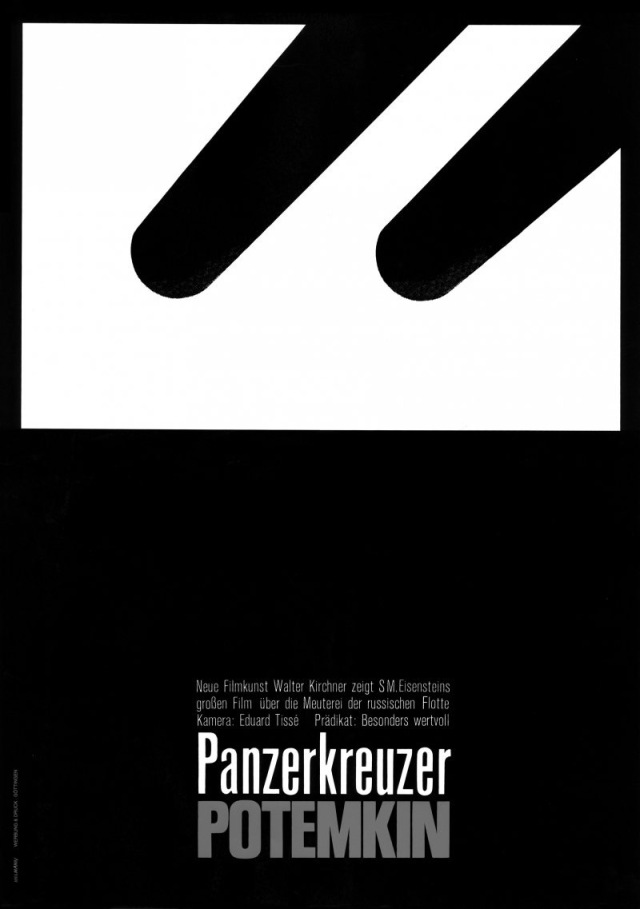
A sleek, minimal image focussing again on the battleship’s gun turrets. The negative space is well-considered and the text is contained in a neat box. It sets the tone for the cruelty and brutality exposed in the film.
It’s so stripped-down; I think this is my favourite official foreign poster design that I’ve seen for Potemkin.
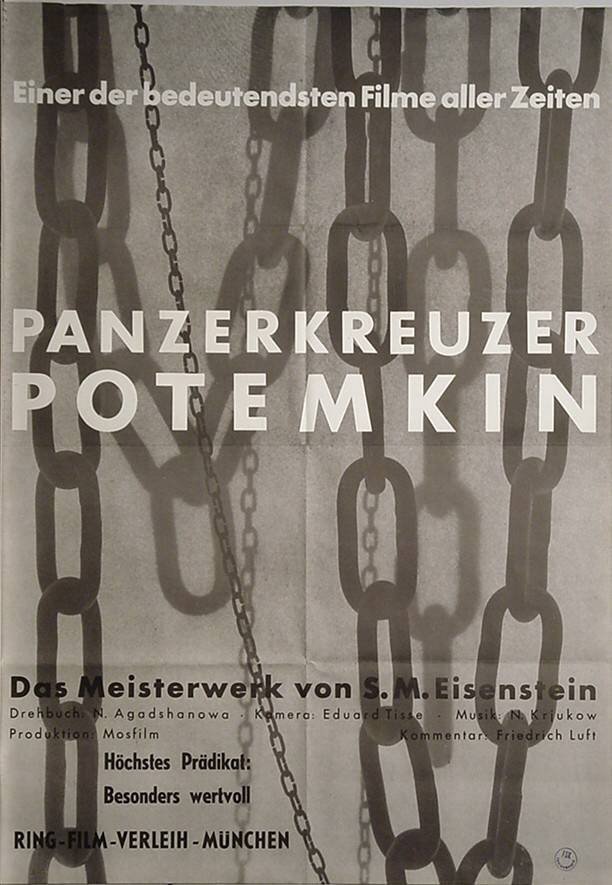
It is unfortunate that I cannot find the creator of this photographic poster, or the date in which it was made. It has an unsettling atmosphere about the composition as chains can carry negative connotations such as abuse (of power and authority) and constriction or confinement. I think it’s fresh that this poster focuses not on more iconic battle ship imagery, the sailors, or soldiers, but something a little more abstract.
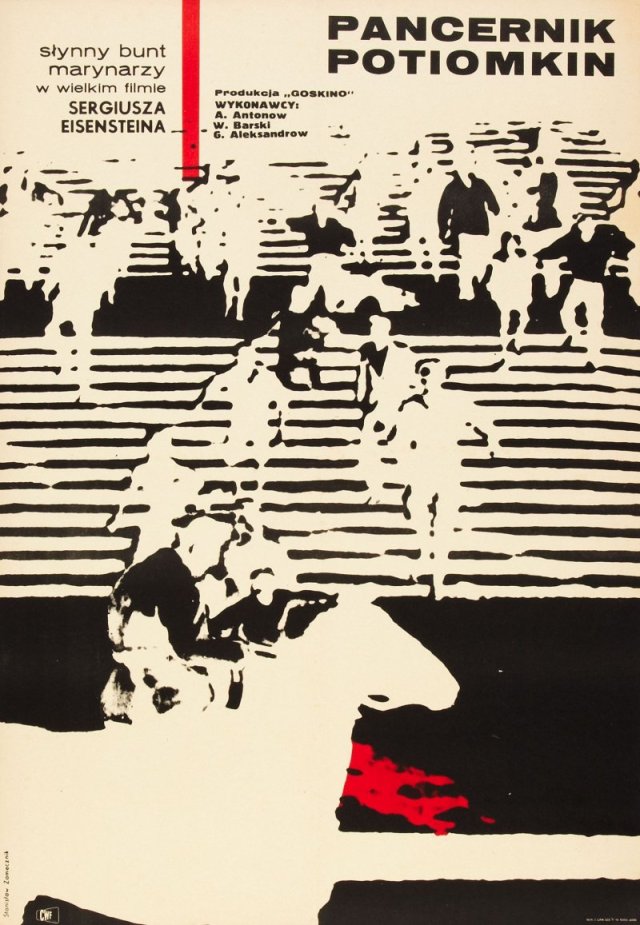
A poster in black, white, and red. This poster was made long after the film’s original run and depicts what is arguably the most famous scene from the film; the massacre on the steps of the monumental staircase of Odessa.
Because this image directly borrows from a memorable sequence, it loses the chance to be memorable by its own merit, but the choice to use a frame from the film is understandable.
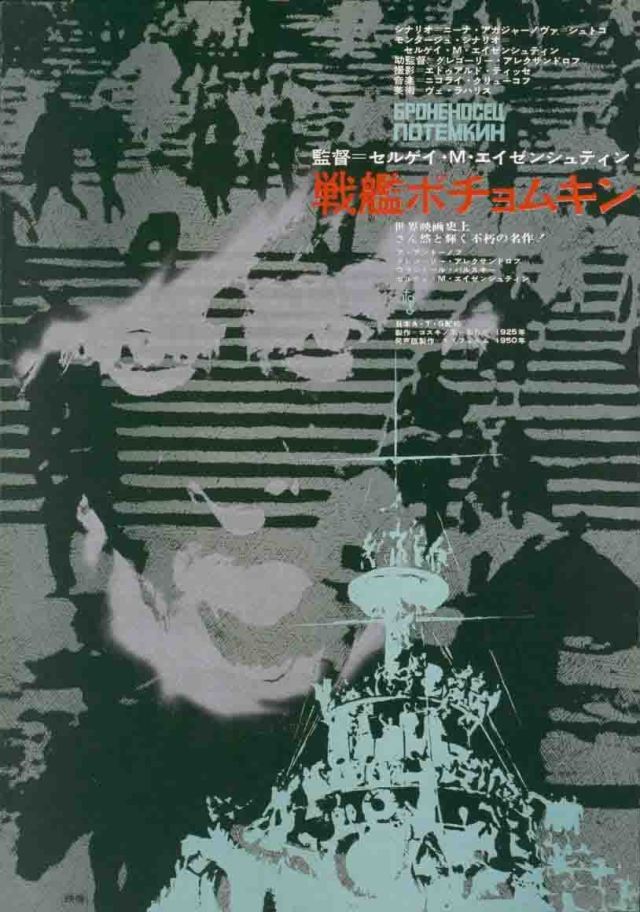
Another foreign poster with no leads to the date produced or creator. Again the artist chose to use imagery from the massacre that took place on the steps of the monumental staircase of Odessa. This time with overlapping imagery and a greater number of colours. The more I look at it, the more I appreciate the unique colour choice.
As with the Polish poster by Stanislaw Zamecznik, this Japanese poster isn’t an original composition, and it does not stand out as a unique creation. In all fairness, there are other posters that use stills from the film to create photomontages, than original illustration.
It’s been fun and insightful looking at these varied takes on Battleship Potemkin poster advertisements. Can you think of any successful films with overseas posters that you feel capture the essence of the work just as well or better than the first domestic poster? Do the original posters still hold up, or is their lasting appeal intertwined with a lot of nostalgia?


